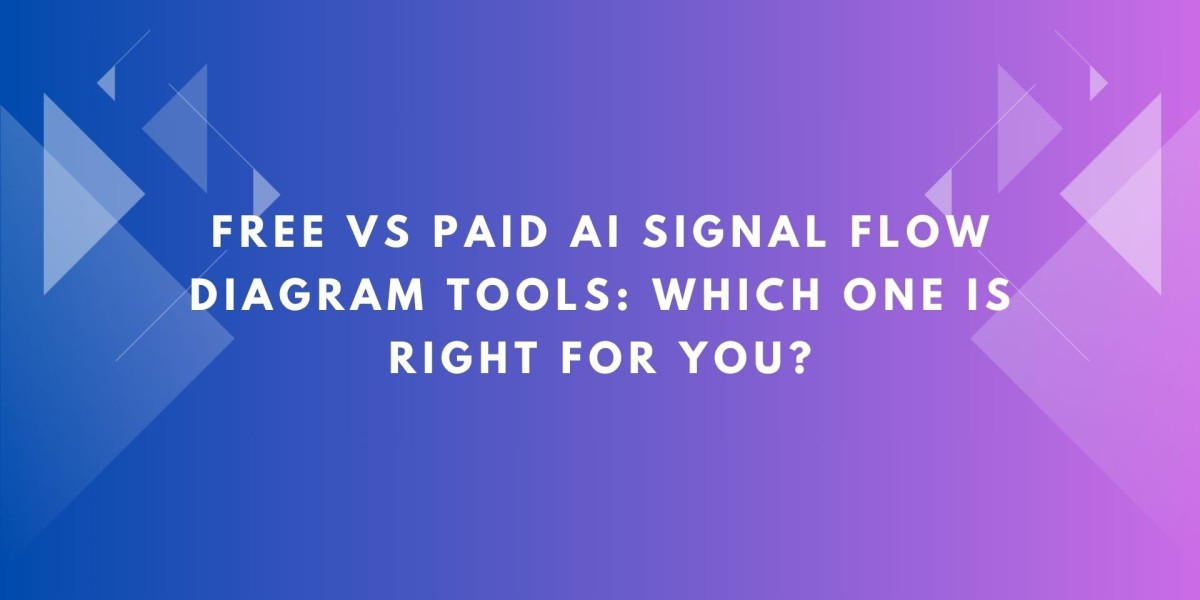In today’s fast-paced AV industry, signal flow diagrams are essential for designing, documenting, and managing complex systems. With advancements in artificial intelligence, AV professionals now have access to AI Signal Flow Diagram Software that simplifies design tasks, reduces errors, and speeds up project timelines. At the forefront of this innovation is XTEN-AV, a platform that has redefined how designers and integrators approach signal flow diagrams. But with so many options available—including both free and paid AI-based tools—how do you decide which solution is right for your needs? This blog explores the key differences between free and paid AI signal flow diagram tools and offers guidance to help you make the best choice.
Why AI Signal Flow Diagram Software Matters
AI Signal Flow Diagram Software uses artificial intelligence to automate and optimize the creation of signal flow diagrams. Unlike traditional tools that require manual drawing of every connection, AI-driven platforms assist by auto-generating signal paths, checking for errors, suggesting optimizations, and dynamically updating diagrams as changes are made. Whether you are working on a small meeting room or a large-scale broadcast facility, these tools can save time and improve design quality.
XTEN-AV is a leading example of paid AI signal flow diagram software that combines intelligent design features with advanced collaboration, documentation, and integration capabilities. However, there are also free AI-based or semi-automated tools on the market. Let’s explore the pros and cons of both options.
The Case for Free AI Signal Flow Diagram Tools
Free tools can be attractive, especially for small businesses, freelancers, educational institutions, or AV professionals who are just beginning to explore AI-enhanced design. These platforms often provide basic AI functionality, such as:
Auto-detection of simple signal paths.
Access to limited device libraries.
Basic diagram export options.
Cloud storage with minimal capacity.
The biggest advantage of free AI tools is cost savings. When budget is tight, a free tool allows you to experiment with AI-powered design features without making a financial commitment. Free tools are often easy to access and can be useful for small projects where system complexity is low.
However, free tools come with limitations. They may not provide the depth of automation, device database access, or integration capabilities that paid platforms like XTEN-AV offer. Support is usually limited, and advanced features—such as real-time collaboration, bill of materials generation, or dynamic re-optimization—are often locked behind paywalls.
The Advantages of Paid AI Signal Flow Diagram Tools
Paid platforms like XTEN-AV offer a full suite of features designed for professional AV design and integration. Some of the key advantages of paid AI signal flow diagram software include:
Advanced AI Functionality
Paid tools provide more powerful AI engines that can handle complex routing, optimize signal paths for latency and bandwidth, and validate diagrams against industry standards. These tools can manage larger systems with greater accuracy and efficiency.
Extensive Device Libraries
XTEN-AV and similar paid platforms offer access to large, regularly updated device libraries from leading manufacturers. This means you can work with real-world components and generate diagrams that are ready for implementation without manual symbol creation.
Real-Time Collaboration
One of the standout features of paid tools is the ability to collaborate in real time. Teams can work on the same diagram simultaneously, with updates appearing instantly for all users. This is essential for larger projects where multiple designers and engineers contribute to the design.
Seamless Integration
Paid AI signal flow diagram tools integrate with other platforms, such as project management software, bill of materials generators, and procurement systems. This integration streamlines the entire project workflow, from design to installation.
Dynamic Re-Optimization
When changes are made to the system—whether adding devices or adjusting routing—the AI engine in paid tools can automatically re-optimize the entire diagram. This keeps documentation accurate and up to date.
Dedicated Support and Training
Paid platforms provide customer support, onboarding assistance, and training resources. This ensures that your team can make the most of the software’s features and troubleshoot any issues effectively.
How to Decide Which Option Is Right for You
When choosing between free and paid AI signal flow diagram tools, consider the following factors:
Project Complexity: If you are working on small, simple systems, a free tool may meet your basic needs. For larger, more complex projects, paid tools offer the advanced features and reliability you will require.
Budget: Cost is always a factor. Free tools are suitable when budget constraints are tight, but it is important to weigh the long-term value of paid software, which can save time and reduce costly errors.
Team Size and Collaboration Needs: If you work as part of a team or collaborate with multiple stakeholders, paid platforms like XTEN-AV provide the real-time features and role-based access controls that free tools typically lack.
Integration Requirements: If your workflow involves integration with project management systems, procurement, or installation planning, a paid tool will provide the necessary connectivity and automation.
Support and Updates: Free tools usually offer limited or community-based support, whereas paid software comes with dedicated assistance, regular updates, and access to the latest features.
Conclusion
AI Signal Flow Diagram Software is transforming how AV professionals design, document, and manage systems. Free tools can be a good starting point for exploring AI-driven design and managing small-scale projects. However, for those working on larger, more complex systems, or for businesses that value efficiency, accuracy, and integration, paid platforms like XTEN-AV provide a level of capability and reliability that free tools simply cannot match.
When deciding which option is right for you, consider your project needs, team structure, budget, and long-term goals. Investing in a paid AI tool may seem like a bigger upfront cost, but the time savings, error reduction, and enhanced collaboration it delivers can pay off many times over. In the end, the right tool is the one that helps you deliver high-quality AV designs with confidence and efficiency.
Read more: https://gwendpots.substack.com/p/top-features-to-look-for-in-a-signal






